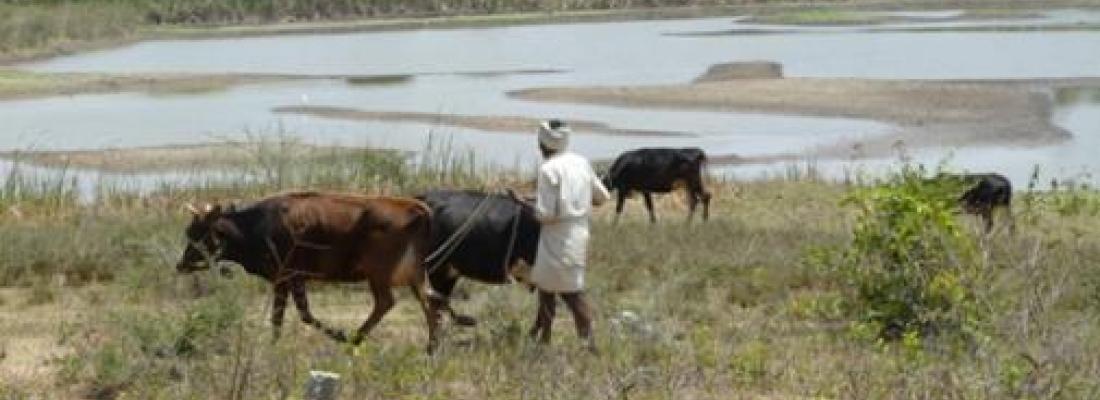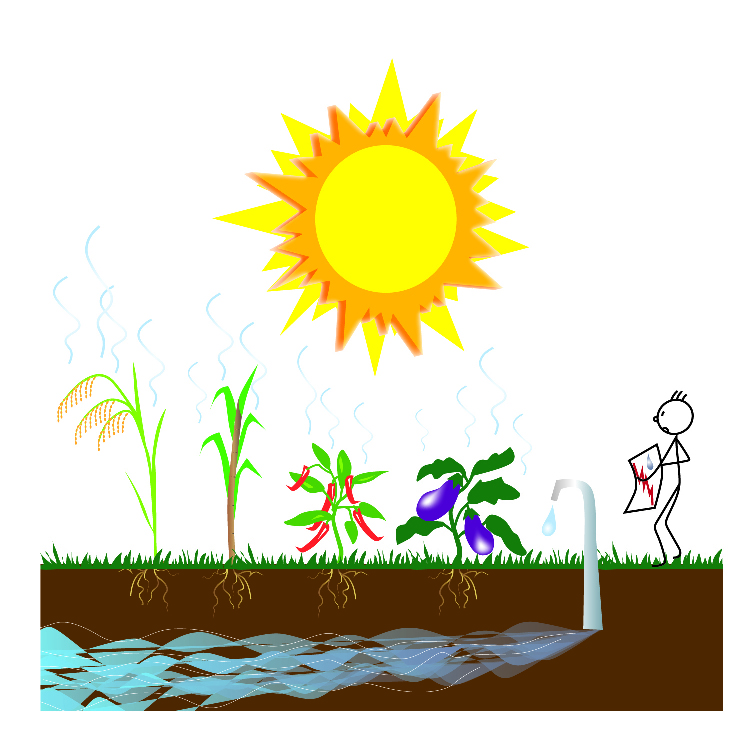Climate change and risks Reading time 3 min
Adapting irrigation to prepare Indian agriculture for climate change
Published on 11 January 2018


“After the green revolution of the 1970s, when the use of inputs made it possible to increase agricultural production, Indian agriculture experienced a second revolution in the 1990s, with economic reforms and the explosion of individual irrigation through pumping. Today, 20% to 30% of the electricity produced by the country is used to directly pump groundwater for irrigation purposes,” explains Laurent Ruiz of the SAS research unit in Rennes. Laurent is co-leader of the AICHA project (‘Adaptation of Irrigated Agriculture to Climate Change in India’) alongside Alban Thomas, from the TSE-R research unit in Toulouse and Professor Muddu Sekhar, from the Indian Institute of Sciences in Bangalore. Following the development of pumping, rainfed crops were abandoned by producers in favour of irrigated cash crops such as sugar cane, rice, spices and vegetables. Water table levels subsequently fell rapidly and their quality deteriorated considerably. The project was designed to determine which cropping systems could guarantee agricultural productivity while avoiding the degradation of water resources in the context of climate change.
An 80km² living laboratory
“The question was, in which direction do we take this massive irrigation policy: towards a total depletion of the water table? Should we return to rainfed crops and damage farm profitability? We needed to understand the dynamics of producers’ responses to this situation,” explains the researcher. The tools were quickly put in place. An 80km² watershed, comprising 12 villages, was identified to carry out observations: surveys, monitoring of groundwater levels and cropping practices. To capitalise on this information, AICHA teams created an integrated model which replicates farmers’ economic choices, watershed hydrology and cropping practices. The tool also makes it possible to simulate the impact of water management policies at the watershed scale.
Irrigation only in the rainy season
“The first results of the simulations were disappointing. It was not possible in any of the scenarios for all farmers to irrigate their crops using their existing cropping systems. The implementation, as in France, of irrigation quotas risks penalising still further farmers, who would be forced to return to rainfed agriculture. Because of their debt levels, they would then be in danger of going bankrupt,” explains Alban. So, researchers approached the problem from a different angle, seeking to design agricultural systems and practices based on adapting farms to their area and climate. “It rains around 800mm a year and the evapotranspiration potential averages 1,500mm per year, so no matter what cropping techniques are used, if you grow all year, the water balance is negative!” says Laurent. However, by adapting crop rotations to the climate and by using irrigation only during the rainy season, to secure yields when these rains are insufficient, the results are quite different, explains Laurent. “The model outputs suggest that agricultural production and farm income remain stable, while a reasonable level of water is maintained in the water table,” he adds.
ATCHA project takes over from AICHA
The results of the AICHA project have encouraged researchers to go further and consider improvements to public policies. “Our initial idea was to understand the link between agronomic adaptations of production systems, the food needs of Indian society and the public policies to be introduced. Legumes are a good example because they are the bedrock of the Indian diet. However, India currently produces insufficient grain legumes because, as rainfed crops, they have been abandoned in favour of other more profitable crops due to the development of irrigation. The mechanisms put in place by the state over the past two years guaranteeing higher prices to farmers have not been able to reverse this trend,” explains Laurent, one of the leaders of the AICHA project. The ATCHA project is aimed at testing the model in real conditions in order to see if public policies can be improved. The sociological component is therefore more important and researchers are working in close collaboration with Indian agronomists to adapt the STICS crop model to tropical species. Workshops with farmers are being organised and will be followed by workshops with public policy stakeholders to share scenarios and identify avenues for action. “We can suggest concrete scenarios based, for example, on the distribution of electricity to power the pumps. Currently, farmers receive three free hours of electricity a day all year round. The models show that if they had more electricity in the monsoon season, and nothing during the four months of the hot and dry season, then water withdrawals, energy consumption and the biomass produced would all be optimised,” explains the researcher.
References:
Robert M., Thomas A., Sekhar M., Badiger S., Ruiz L., Raynal H., Bergez J.E. (2017) Adaptive and dynamic decision-making processes: A conceptual model of production systems on Indian farms. Agricultural Systems, 157, 279-291. http://dx.doi.org/10.1016/j.agsy.2016.08.001
Buvaneshwari S, Riotte J, Sekhar M, Mohan Kumar MS, Sharma AK, Duprey JL, Audry S, Giriraj PR, Yerabham P, Moger H, Durand P, Braun JJ and Ruiz L (2017) High spatial variability of nitrate contamination in the hard rock aquifer of an irrigated catchment: Implications for water resource assessment. Science of the Total Environment. 579, 838-847 http://dx.doi.org/10.1016/j.scitotenv.2016.11.017
